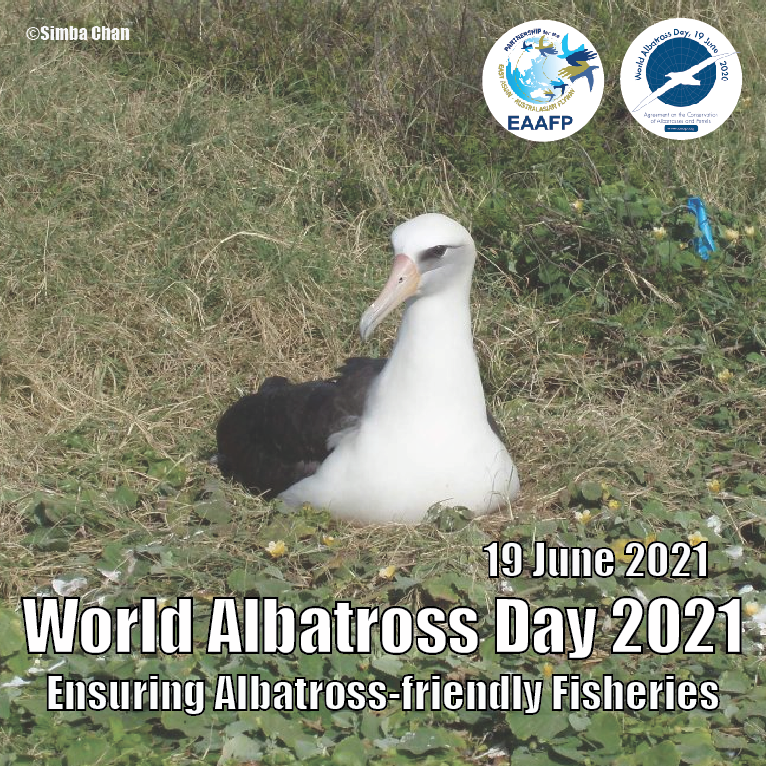
Today is the World Albatross Day (WAD)! It was launched in 2020 by the Agreement on the Conservation of Albatrosses and Petrels (ACAP) to dedicate 19th June every year to raise awareness of the conservation needs of albatrosses, petrels, and shearwaters. Many of them are being killed as a result of fisheries operations and other human-induced threats. This year, the theme for WAD2021 is “Ensuring Albatross-Friendly Fisheries”, to highlight the problems of populations of albatrosses, and other seabirds that are declining due to fisheries bycatch.
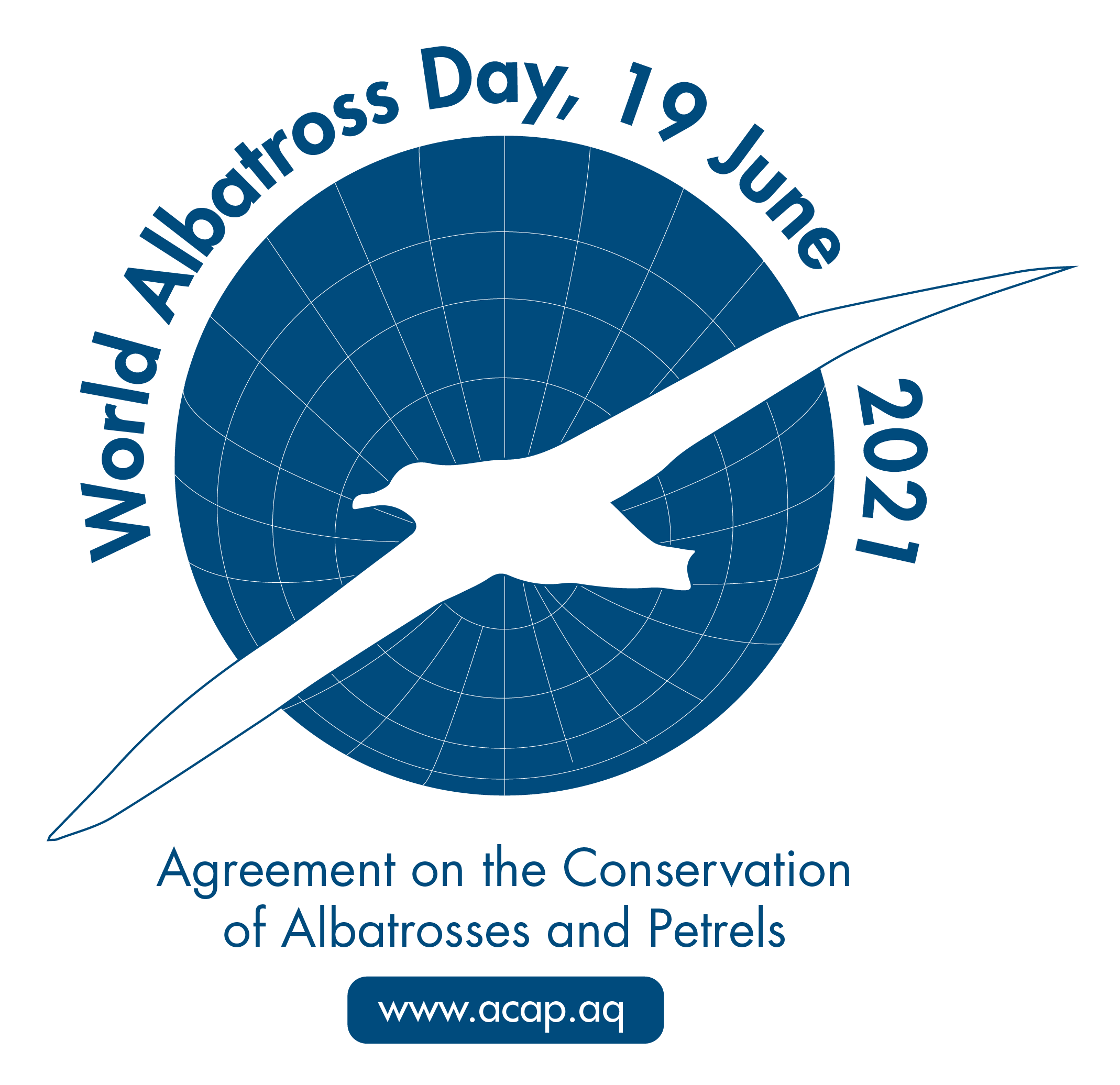
Words from Mr. Robert (Robb) Kaler, Chair of EAAFP and Chair of EAAFP Seabird Working Group
“This year’s theme of World Albatross Day “Ensuring Albatross-Friendly Fisheries” reminds us of the impact that human brought to, not only Albatrosses but many seabird species. Fishery bycatch is one of the main threats to the decline of seabirds worldwide. Scientists, government agencies, and the fishing industry sector are now implementing mitigation, in which some of them are simple to apply. In the EAA Flyway, studies about seabirds are very limited. World Albatross Day is a great opportunity to raise the awareness on seabird conservation, and highlight the importance of reducing impacts of the world’s fisheries on seabirds and other non-targeted species.”
The problems of fisheries threatening albatrosses and other seabirds
Many seabird species, especially Albatrosses, spend most of their lives soaring in open seas, except during the breeding time when they return to land to nest. Yet staying far from land does not stop seabirds from being impacted by human activities. In fact, nearly half of the world's seabird populations are declining, especially Albatrosses, with 15 of 22 species are threatened with extinction.
Albatrosses feed mainly on fish and squid on the ocean’s surface. They can smell their prey from a far (up to 20 km away!). This extraordinary ability, however, exposes them to danger, for they are attracted to fishing vessels which use baited hooks in the longline fishery and can get caught and drown. An estimated 160,000 to 320,000 seabirds are killed annually in longline fisheries1. Trawl, purse seine, and gillnet fisheries are other gear types also have seabird bycatch issues. At least 400,000 seabirds (especially diving species) are estimated to be killed annually in gillnet fisheires globally2.
According to a global assessment of threats to seabirds, the three primary threats are: (i) invasive species impacting 165 species, (ii) bycatch in fisheries affecting 100 species, and (iii) climate change affecting 96 species3.
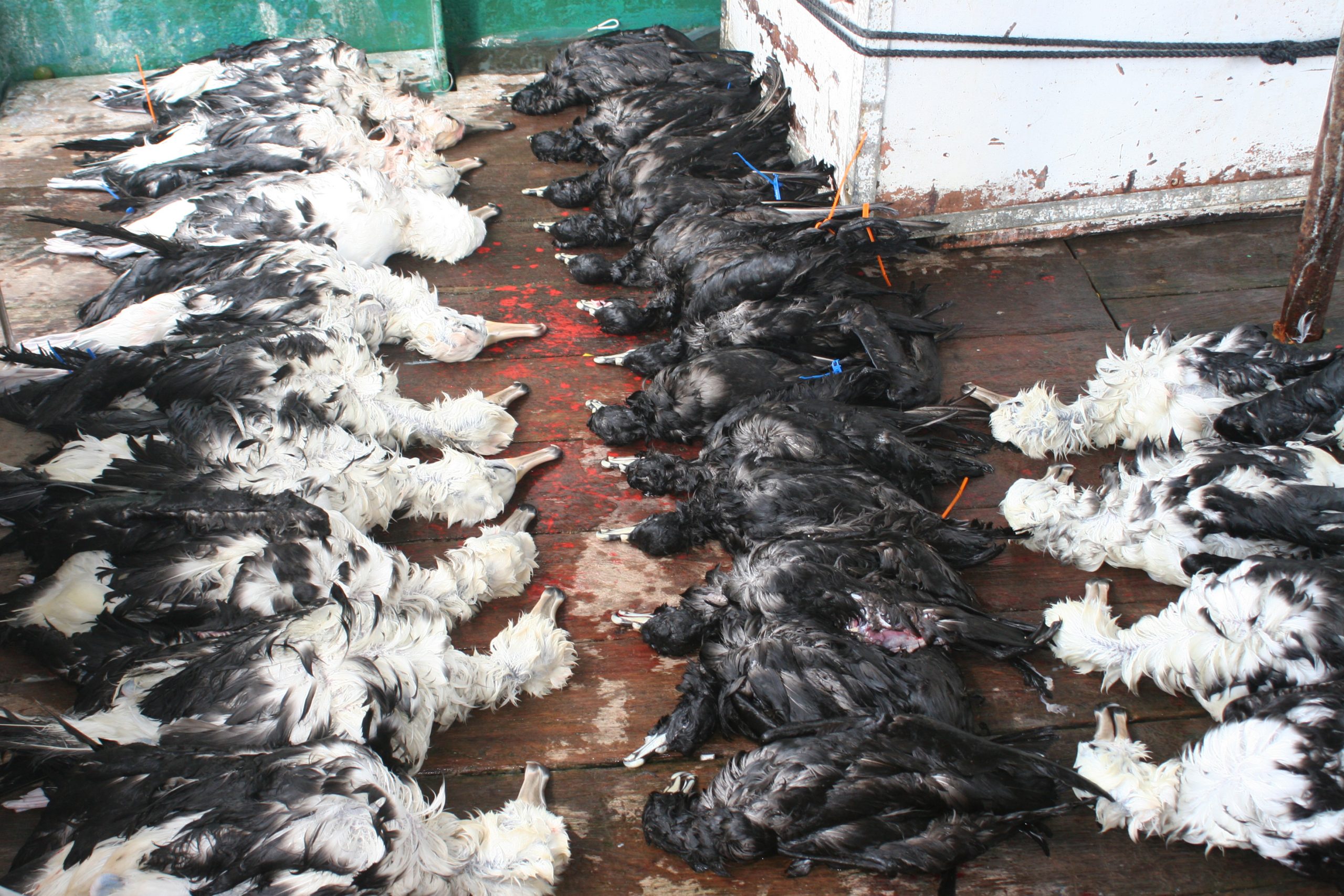
Albatrosses and petrels killed by bycatch in fishery ©Fabiano Peppes
Conservation work in the EAA Flyway
Scientists around the world are working on solutions to reduce seabird bycatch. Some of these methods are: bird-scaring lines (also called tori lines) with colorful streamers attached to lines to keep birds away, fishing at night to reduce interactions between birds and fishing activities, and adding weights to increase the sinking speed of baited hooks.
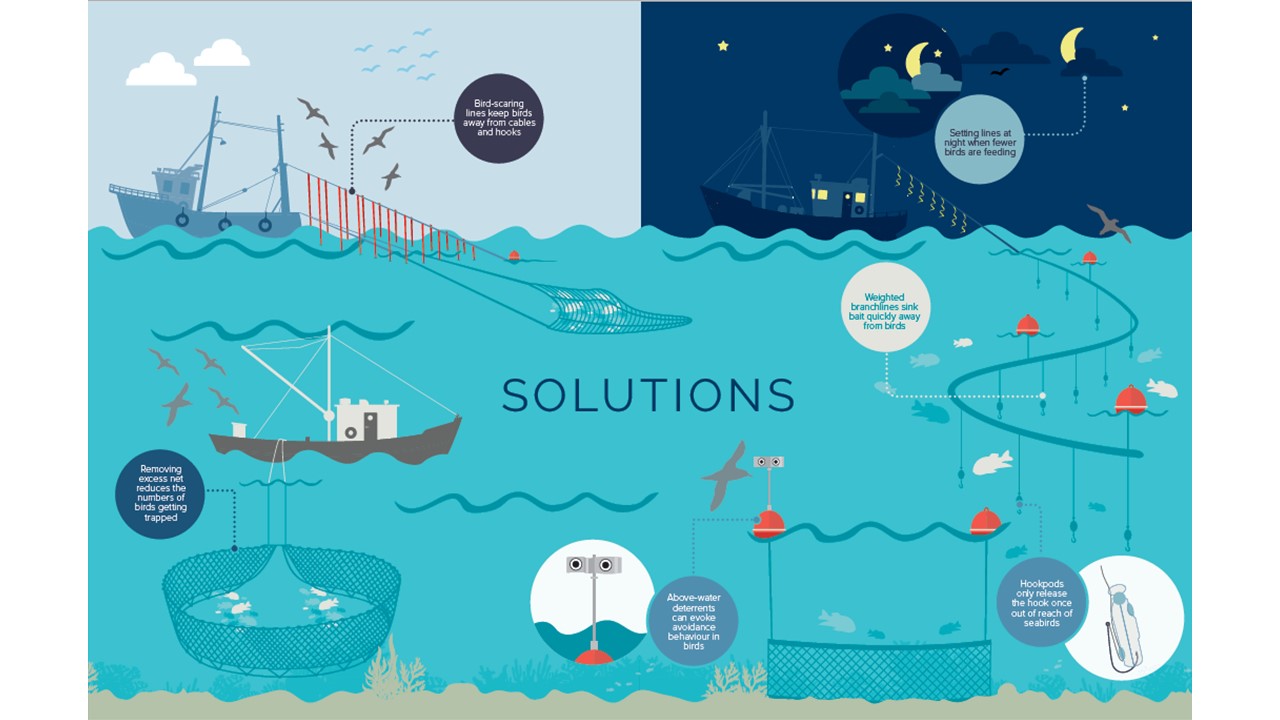
Source: Birdlife International (2021) Towards Seabird-safe Fisheries - Global Efforts & Solutions
In the East Asian-Australasian Flyway, especially in the Asian region, research on seabirds is rather limited, let alone the study on the impact of fisheries on seabirds. Yet, there is work by BirdLife International and Wild Bird Society of Japan (both EAAFP Partners), which developed a nationwide-scale hotspot map of seabird bycatch in gillnet fisheries in Japan (read [more]). Another project to evaluate mitigation ideas of seabird bycatch in gillnet under a controlled condition is ongoing, and data collection of seabird bycatch in gillnet fisheries in collaboration with local fishers is about to begin.
Know about the three species of Albatrosses in EAAFlyway
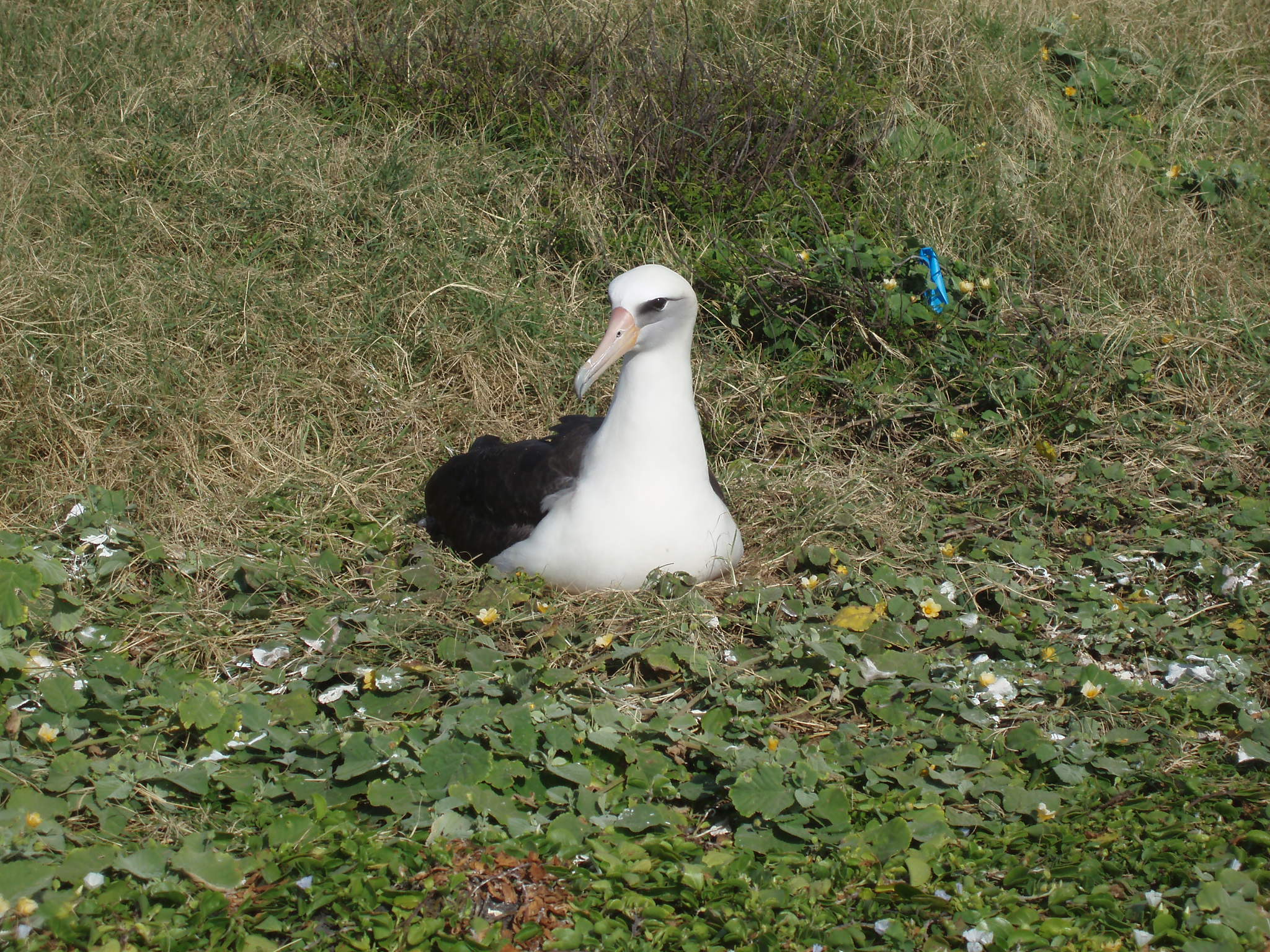 Laysan Albatross ©Simba Chan |
Laysan Albatross, Phoebastria immutabilis, is a large seabird (length: 79-81 cm) with white head with dark gray-brown upper wings. It is the most common albatross in open Pacific Ocean. The species is listed as Near Threatened (NT) by IUCN. Main threats in breeding sites are the invasion of rats and feral cats. Conservation or eradication of Polynesian rats had been successfully managed. The famous oldest known wild bird in the world Wisdom, still raising a chick at age 70, is of this species.
|
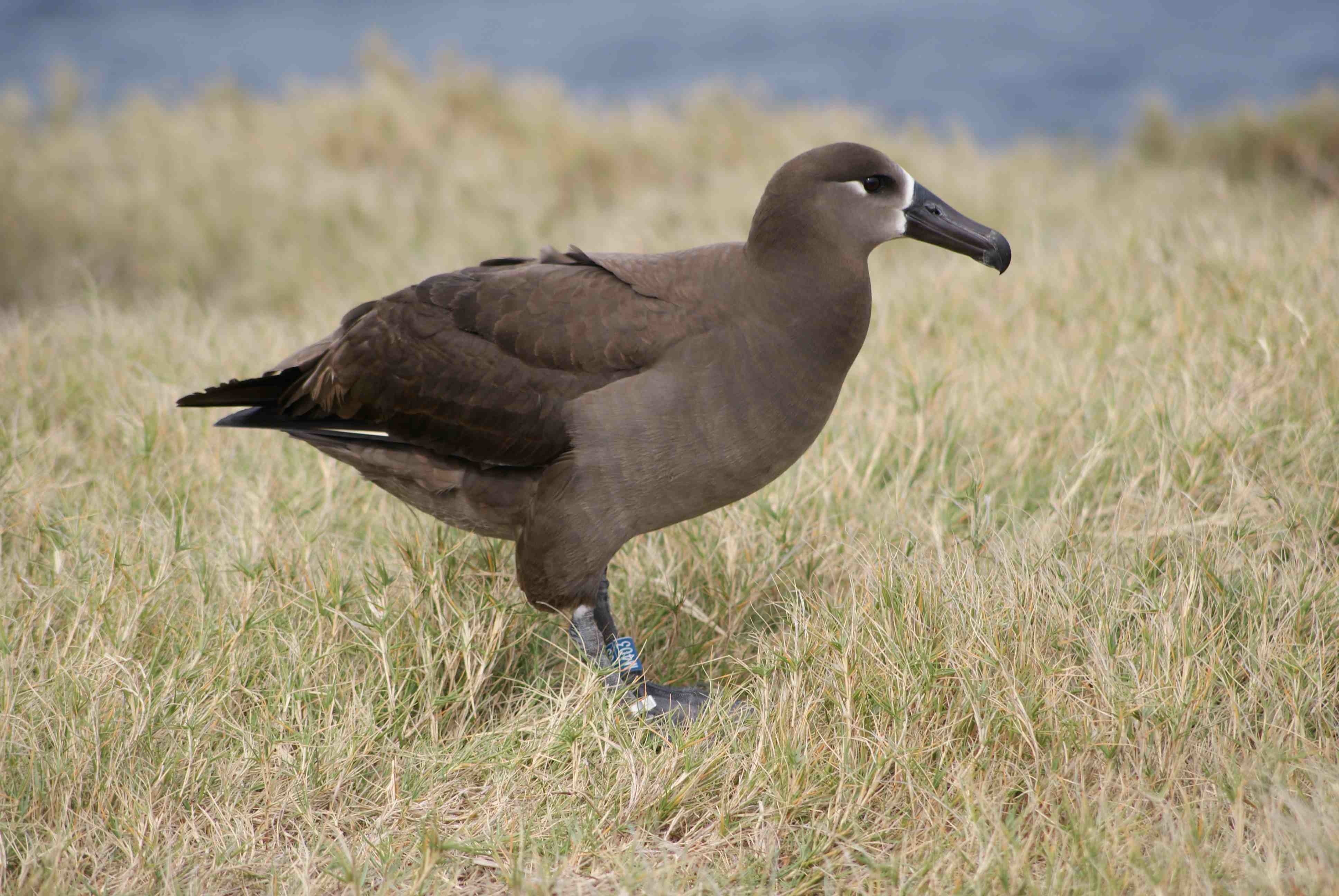 Black-footed Albatross at Ogasawara Island ©Tomohiro Deguchi |
Black-footed Albatross, Phoebastria nigripes, (length: 68-74cm) has long, narrow wings and mostly dark except for a white ring around its long, thick bill. It breeds on oceanic islands across the tropical and subtropical North Pacific Ocean and adults concentrate on nesting islands in Izu and Ogasawara Islands of Japan and on Senkaku Islands. The species is listed as Near Threatened (NT) by IUCN because it is taken incidentally by longline fishery. Main threats used to be feral cats on Northwestern Hawaiian Islands where the eradication has been taken effectively. |
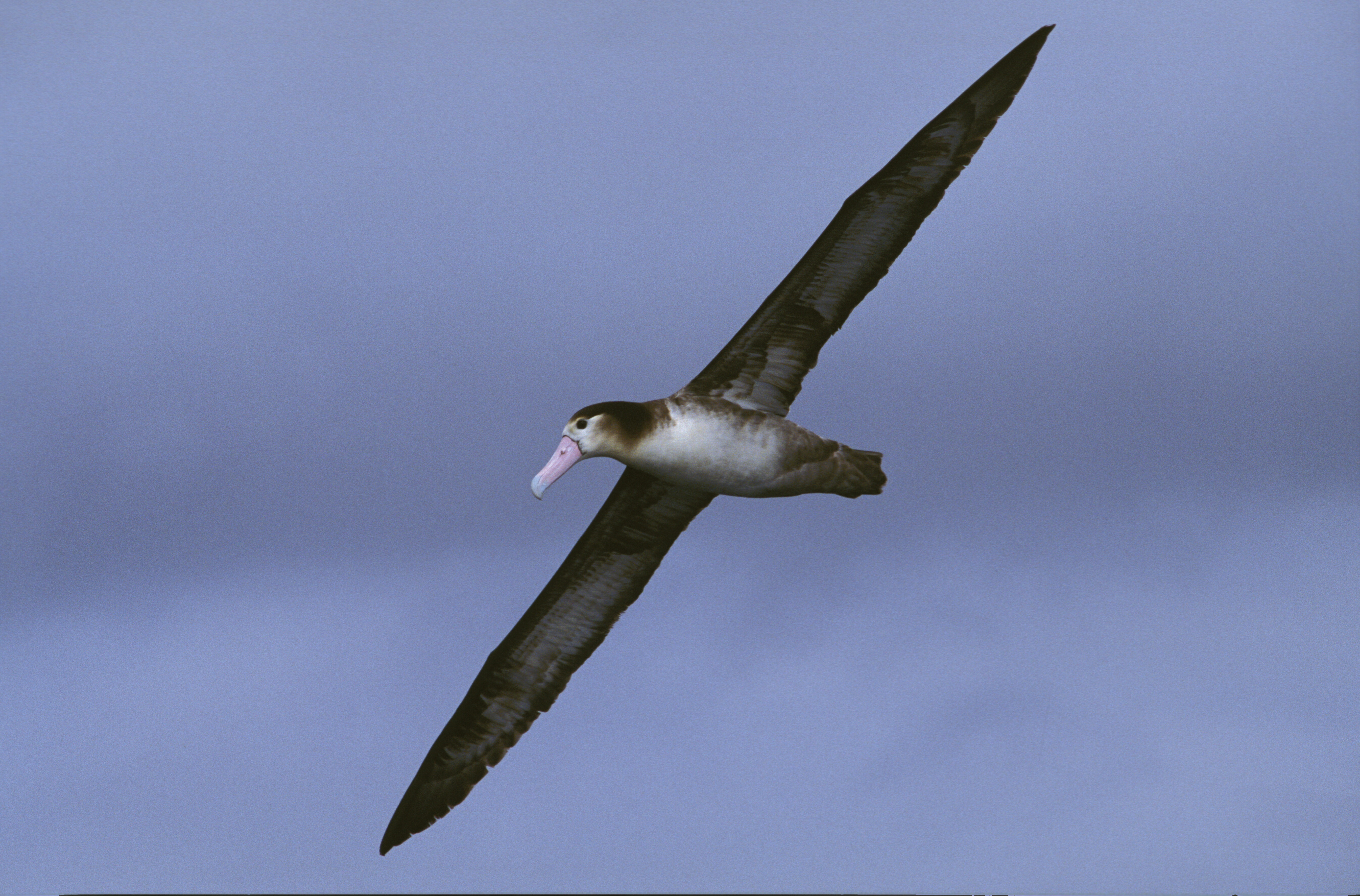 Short-tailed Albatross ©Lee Kwok Shing |
Short-tailed Albatross, Phoebastira albatrus is a large pelagic bird (length:84-94 cm) with long narrow wings adapted for soaring just above the water surface. It spends most of its life over northern Pacific Ocean and breeds on islands off Japan and more recently, Midway Atoll. Its population is estimated to be 7,365 birds and listed as Vulnerable (VU) by IUCN. Erosion, flooding, and high winds (blow chicks off their nests) at Tsubame-zaki colony, and black rats on Torishima remain as threats to the bird despite habitat management efforts that have been undertaken. |
Join the World Albatross Day activities:
- Follow the Albatross Task Force on Instagram (https://www.instagram.com/albatross_stories/), join the Albatross World Cup, take the Friday Quiz, see how much you know about Albatrosses in the world.
Check also their Facebook (https://www.facebook.com/Albytaskforce/) and Twitter (https://twitter.com/AlbyTaskForce) - World Albatross Day events in Japan (in Japanese): 世界アルバトロスデー
- Join the quiz from EAAFP about the World Albatross Day, click [here]!
References:
- Anderson, al. 2011. Global seabird bycatch in longline fisheries. Endang. Species Res. 14, 91–106 (http://www.int-res.com/abstracts/esr/v14/n2/p91-106/)
- Žydelis, al. 2013. The incidental catch of seabirds in gillnet fisheries: A global review. Biological Conservation. 162: 76-88. (https://doi.org/10.1016/j.biocon.2013.04.002)
- Dias al. 2019. Threats to seabirds: A global assessment. Biological Conservation. 237: 525-537 (https://doi.org/10.1016/j.biocon.2019.06.033)
- Birdlife International (2021) Towards Seabird-safe Fisheries - Global Efforts & Solutions.




